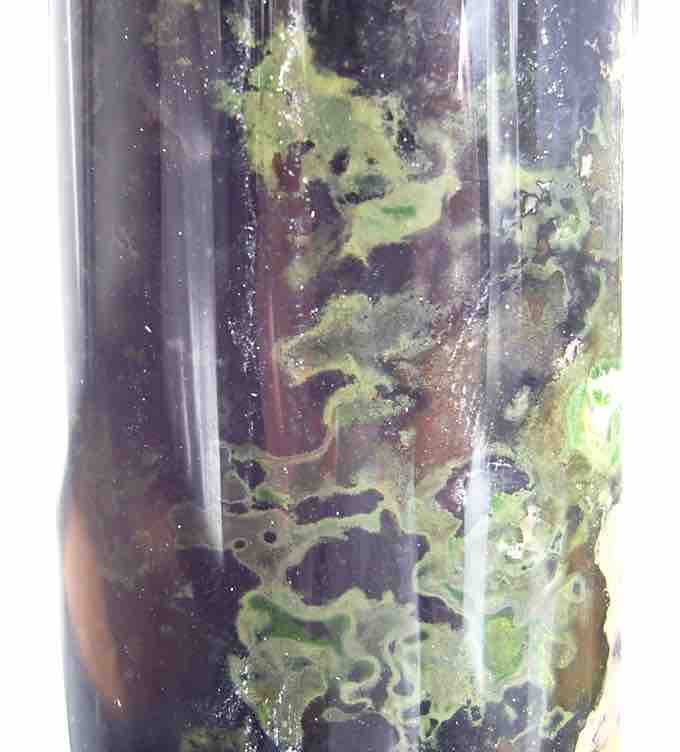Overview of Photosynthesis
Phototrophy is the process by which organisms trap light energy (photons) and store it as chemical energy in the form of ATP and/or reducing power in NADPH. There are two major types of phototrophy: chlorophyll-based chlorophototrophy and rhodopsin-based retinalophototrophy. Chlorophototrophy can further be divided into oxygenic photosynthesis and anoxygenic phototrophy.
Oxygenic and anoxygenic photosynthesizing organisms undergo different reactions, either in the presence of light or with no direct contribution of light to the chemical reaction (colloquially called "light reactions" and "dark reactions", respectively). Anoxygenic photosynthesis is the phototrophic process where light energy is captured and converted to ATP, without the production of oxygen; water is, therefore, not used as an electron donor. There are several groups of bacteria that undergo anoxygenic photosynthesis: green sulfur bacteria, green and red filamentous anoxygenic phototrophs (FAPs), phototrophic purple bacteria, phototrophic acidobacteria, and phototrophic heliobacteria.
ANOXYGENIC PHOTOTROPHS
Anoxygenic phototrophs have photosynthetic pigments called bacteriochlorophylls ; these are similar to chlorophyll found in eukaryotes. Bacteriochlorophyll a and b have wavelengths of maximum absorption at 775 nm and 790 nm, respectively. Unlike oxygenic phototrophs, anoxygenic photosynthesis only functions using either one of two possible types of photosystem. This restricts them to cyclic electron flow; they are therefore unable to produce O2 from the oxidization of H2O.

Bacteriochlorophyll a
Bacteriochlorophylls are photosynthetic pigments that occur in various phototrophic bacteria. They are related to chlorophylls, which are the primary pigments in plants, algae, and cyanobacteria.
GREEN SULFUR BACTERIA
The green sulfur bacteria are a family of obligately anaerobic photoautotrophic bacteria most closely related to the distant Bacteroidetes. They are non-motile with the exception of Chloroherpeton thalassium, which may glide. They come in sphere, rods, and spiral forms. Photosynthesis is achieved using bacteriochlorophyll (BChl) c, d, or e, in addition to BChl a and chlorophyll a, in chlorosomes attached to the membrane. The electron transport chain (ETC) of green sulfur bacteria uses the reaction centre bacteriochlorophyll pair, P840. When light is absorbed by the reaction center, P840 enters an excited state with a large negative reduction potential, and so readily donates the electron to bacteriochlorophyll 663 which passes it on down the electron chain. The electron is transferred through a series of electron carriers and complexes until it either returns to P840 or is used to reduce NAD+. If the electron leaves the chain to reduce NAD+, P840 must be reduced for the ETC to function again. The green sulfur bacterias' small dependence on organic molecule transporters and transcription factors indicates that these organisms are adapted to a narrow range of energy-limited conditions, and fit into an ecology shared with the simpler cyanobacteria,

Green d winogradsky
A column containing green sulfur bacteria which uses anoxygenic photosynthesis.
PURPLE SULFUR BACTERIA
The purple sulfur bacteria are a group of Proteobacteria capable of photosynthesis. They are anaerobic or microaerophilic, and are often found in hot springs or stagnant water. Unlike plants, algae, and cyanobacteria, they do not use water as their reducing agent, and so do not produce oxygen. Instead, they use hydrogen sulfide, which is oxidized to produce granules of elemental sulfur. This in turn may be oxidized to form sulfuric acid.The purple sulfur bacteria are divided into two families: the Chromatiaceae and Ectothiorhodospiraceae, which respectively produce internal and external sulfur granules, and show differences in the structure of their internal membranes.
Purple sulfur bacteria are generally found in illuminated anoxic zones of lakes and other aquatic habitats where hydrogen sulfide accumulates. They are also found in "sulfur springs" where geochemically or biologically produced hydrogen sulfide can trigger the formation of blooms of purple sulfur bacteria. Anoxic conditions are required for photosynthesis; these bacteria cannot thrive in oxygenated environments. The electron transport chain of purple non-sulfur bacteria begins when the reaction center bacteriochlorophyll pair, P870, becomes excited by the absorption of light. Excited P870 will then donate an electron to Bacteriopheophytin, which then passes it on to a series of electron carriers down the electron chain. In the process, it will generate a proton motor force (PMF) which can then be used to synthesize ATP by oxidative phosphorylation. The electron returns to P870 at the end of the chain so it can be used again once light excites the reaction-center.